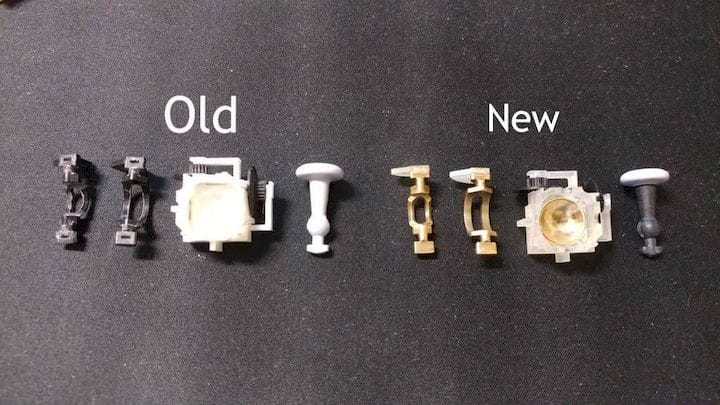![Re-engineering new parts from old using 3D printing [Source: 3D Hubs]](https://fabbaloo.com/wp-content/uploads/2020/05/image-asset_img_5eb0a5e2030b6.jpg)
I’m reading an interesting case study by 3D Hubs and have some thoughts about 3D printing spare parts.
Ever since the introduction of desktop 3D printers, the suspicion by media was that they would become widespread. The most typical application of such infrastructure, they say, would be to 3D print spare parts for broken mechanisms, thus avoiding purchase of new replacement products or expensive and time-consuming repair cycles.
I’ve executed this use case myself several times, producing replacement parts, like a tube for repairing a hose, a telescope focusing aid and several other simple items. It is fun to do, and solves a problem, but does take considerable time to do so.
![A hose quickly repaired by 3D printing a connector tube [Source: Fabbaloo]](https://fabbaloo.com/wp-content/uploads/2020/05/image-asset_img_5eb0a5e250fa5.jpg)
But let’s look at the 3D Hubs case study. In this situation, a student from California Polytechnic University, Nam Le, had strong interest in retro-gaming, where now-prehistoric video games are played. As you can imagine, to do so requires access to old software and hardware. Sometimes very old hardware. Broken hardware.
And that won’t do: you can’t game with broken hardware. In Le’s case it was the handheld controller for a 20-year-old N64 device. The original item had worn out so that the joystick was flopping around and this rendered the system useless.
Le’s challenge was to fix the problem by 3D printing the appropriate replacement parts. But to 3D print something, you must have the digital 3D model, and Le did not. He had to develop the 3D model by himself through disassembly and re-engineering of the original broken item. 3D Hubs explains:
“To begin the project, the first hurdle Nam faced was the lack of documentation on the components, how they interacted and how to assemble them. The first step was disassembling the controller and hand measuring all the individual components. The reason for this was that there was no way to buy new components with the controllers no longer in production.
This entire process from measuring to CAD files took around 3 months to complete, an especially impressive feat since Nam had only taken a basic introduction class to 3D modeling prior.”
Le incorporated some interesting improvements, since he was deeply involved in the design. The most interesting was the choice of materials: he chose to 3D print the inner gears using a hard material on one of 3D Hubs’ nodes, while he chose a softer nylon material for the joystick. This meant that the joystick could never erode the harder (and more complex to replace) gears.
This is a terrific example of a re-engineering project, but it is also an example of why desktop 3D printing never took off: it is far too difficult for normal humans to undertake such work.
In spite of the existence of machines and services like 3D Hubs that can produce the parts in short order, it still took Le months to get this relatively simple design sufficiently correct to finalize the project.
![Animation of N64 controller motion [Source: 3D Hubs]](https://fabbaloo.com/wp-content/uploads/2020/05/image-asset_img_5eb0a5e3bc5fa.gif)
While it’s easy for normal folks like me to design something simple like a tube extension or a doorstop, it’s quite another to design a complex mechanical system. Re-engineering in particular is challenging because the intricacies of the original design must be re-discovered.
Le is the exception; he was able to do this, but most of the public will never be able to do so unless they have a 3D engineer at their side.
That’s not usually the case unless there are significant changes to educational systems in the works that I don’t know of.
This represents one of the major barriers to 3D printing, and I’m not sure if it could ever be overcome. But I’m optimistic; society was able to teach the majority to type and send emails, something once thought difficult. Perhaps it will take a paradigm-level change in the idea of how 3D designs are produced, possibly with massive libraries of pre-made components.
It might also be helped by the establishment of publicly accessible libraries of spare part designs from manufacturers. However, that’s not likely to happen soon for a number of reasons.
Maybe many will be doing their own 3D designs in the distant future.
Via 3D Hubs











MakerOS has a brilliant hidden feature in their online service: a sophisticated 3D print pricing calculator that allows operators to determine exactly how to price prints.